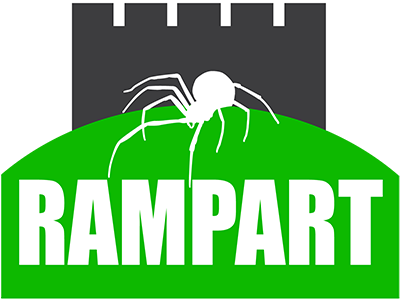Here at Rampart Pest Control, we know pests and how to get rid of them. We stay up with the latest and greatest techniques to bring you the best pest control possible. Below is a breakdown of the most common types of pests we treat, call today to get rid of your bugs!

Mosquitos
Mosquitoes (alternate spelling mosquitos) comprise a group of about 3,500 species of small insects that are flies (order Diptera). Within Diptera they constitute the family Culicidae (from the Latin culex meaning “gnat”). The word “mosquito” (formed by mosca and diminutive -ito) is Spanish for “little fly”. Mosquitoes have a slender segmented body, one pair of wings, one pair of halteres, three pairs of long hair-like legs, and elongated mouthparts.

Cock Roaches
Many remedies have been tried in the search for control of the major pest species of cockroaches, which are resilient and fast-breeding. Garden herbs including bay, catnip, mint, cucumber, and garlic have been proposed as repellents. Poisoned bait containing hydramethylnon or fipronil, and boric acid powder is effective on adults. Baits with egg killers are also quite effective at reducing the cockroach population. Alternatively, insecticides containing deltamethrin or pyrethrin are very effective.

Spiders
Spiders (order Araneae) are air-breathing arthropods that have eight legs and chelicerae with fangs able to inject venom. They are the largest order of arachnids and rank seventh in total species diversity among all orders of organisms. Spiders are found worldwide on every continent except for Antarctica. As of July 2019, at least 48,200 spider species, and 120 families have been recorded by taxonomists.

Scorpions
Scorpions are predatory arachnids of the order Scorpiones. They have eight legs and are easily recognized by the pair of grasping pedipalps and the narrow, segmented tail, often carried in a characteristic forward curve over the back, ending with a venomous stinger. Scorpions range in size from 9 mm / 0.3 in. (Typhlochactas mitchelli) to 23 cm / 9 in. (Heterometrus swammerdami).

Crickets
Crickets (also known as “true crickets”), of the family Gryllidae, are insects related to bush crickets, and, more distantly, to grasshoppers. The Gryllidae have mainly cylindrical bodies, round heads, and long antennae. Behind the head is a smooth, robust pronotum. The abdomen ends in a pair of long cerci; females have a long, cylindrical ovipositor. The hind legs have enlarged femora, providing power for jumping. The front wings are adapted as tough, leathery elytra, and some crickets chirp by rubbing parts of these together.

Beetles
Beetles are a group of insects that form the order Coleoptera, in the super order Endopterygota. Their front pair of wings are hardened into wing-cases, elytra, distinguishing them from most other insects. The Coleoptera, with about 400,000 species, is the largest of all orders, constituting almost 40% of described insects and 25% of all known animal life-forms; new species are discovered frequently. The largest of all families, the Curculionidae (weevils), with some 83,000 member species, belongs to this order.

Red Ant
Fire ant is the common name for several species of ants in the genus Solenopsis. They are, however, only a minority in the genus, which includes over 200 species of Solenopsis worldwide. Solenopsis are stinging ants and most of their common names reflect this, for example, ginger ants and tropical fire ants. Many species also are called red ants because of their light brown color, though species of ants in many other genera are similarly named for similar reasons.

Ghost Ant
Tapinoma melanocephalum is a species of ant that goes by the common name ghost ant. They are recognized by their dark head and pale or translucent legs and gaster (abdomen). This coloring makes this tiny ant seem even smaller.

Hornets, Wasps & African Bees
Hornets (insects in the genus Vespa) are the largest of the eusocial wasps, and are similar in appearance to their close relatives yellow jackets. Some species can reach up to 5.5 cm (2.2 in) in length. They are distinguished from other vespine wasps by the relatively large top margin of the head and by the rounded segment of the abdomen just behind the waist. Worldwide, there are 22 recognized species of Vespa.

Earwigs
Earwigs make up the insect order Dermaptera. With about 2,000 species in 12 families, they are one of the smaller insect orders. Earwigs have characteristic cerci, a pair of forceps-like pincers on their abdomen, and membranous wings folded underneath short, rarely used fore wings, hence the scientific order name, “skin wings”. Some groups are tiny parasites on mammals and lack the typical pincers.
Additional Pests
Termites – We can help you find a termite contractor.
Mice & Rats – We offer advice and traps to help you control your situation.
German roaches and bed bugs are common problems, but require daily vigilance to defeat. We can help you DIY.






